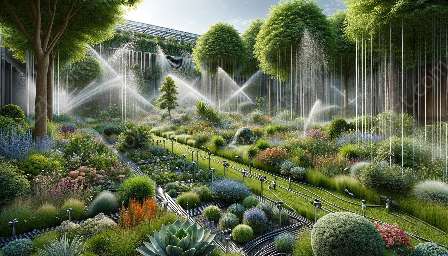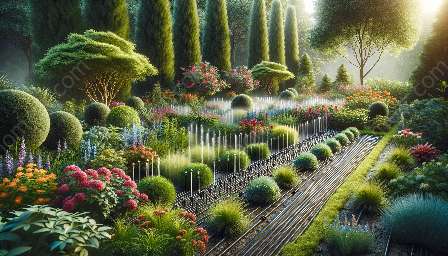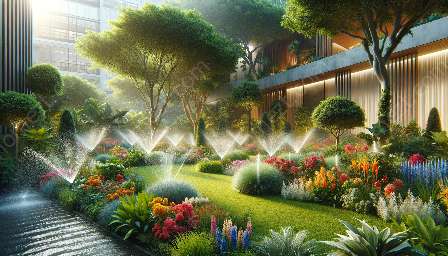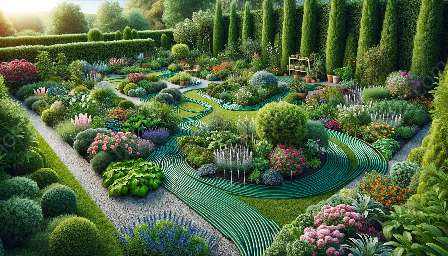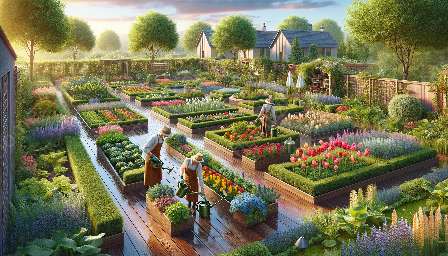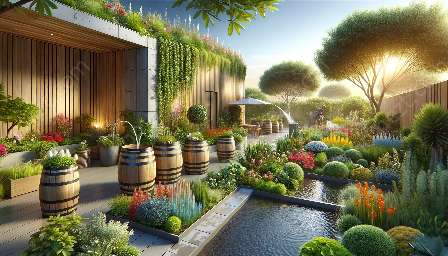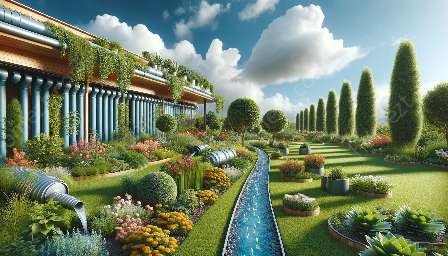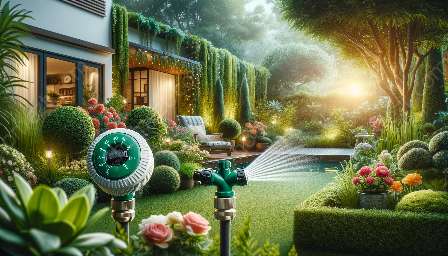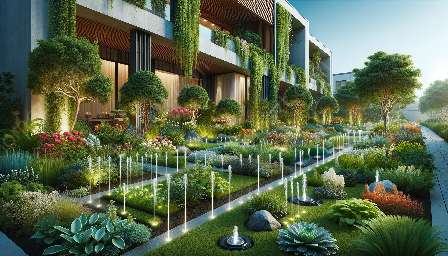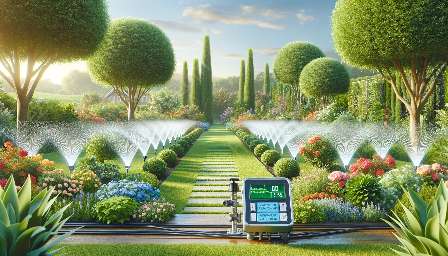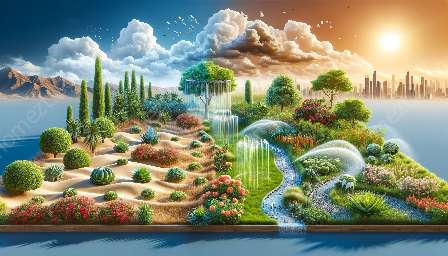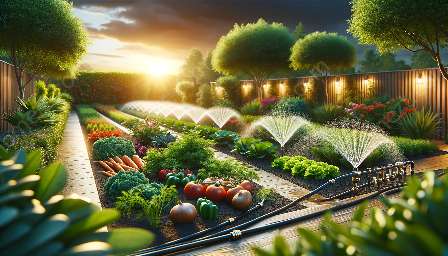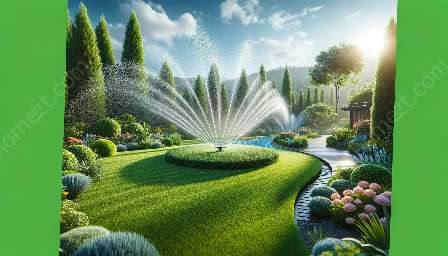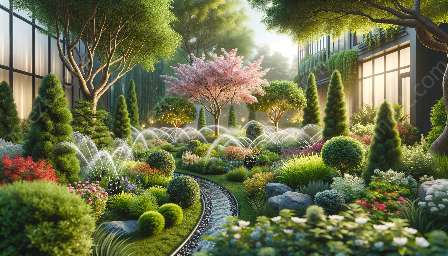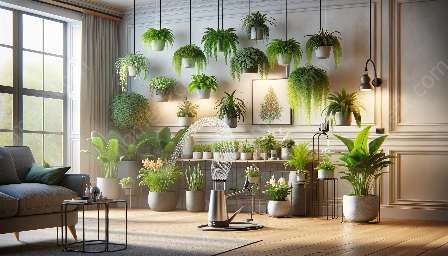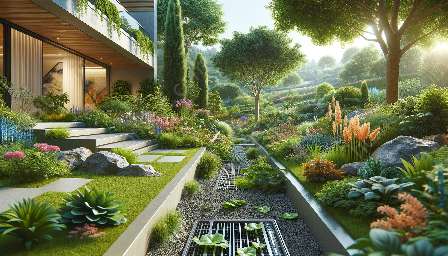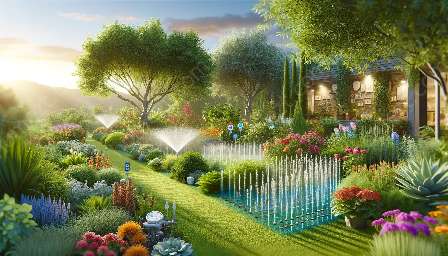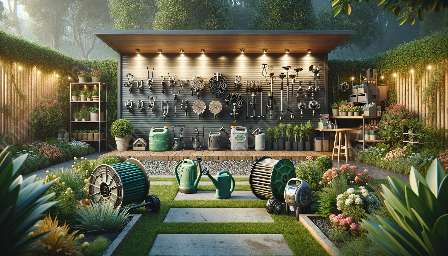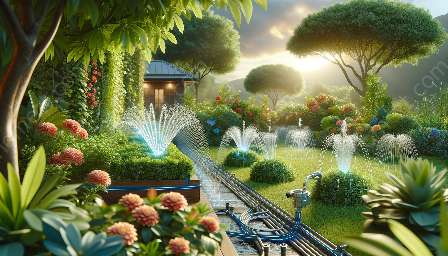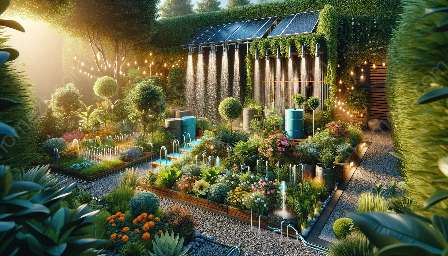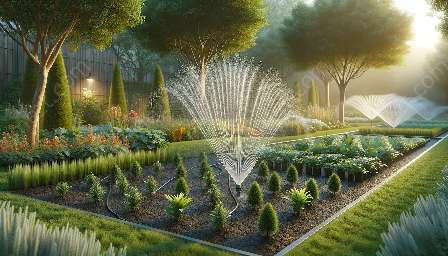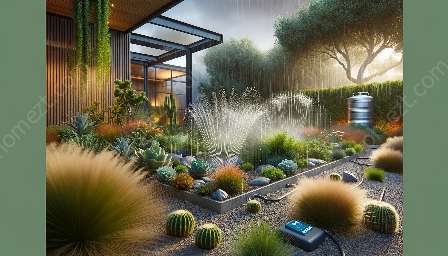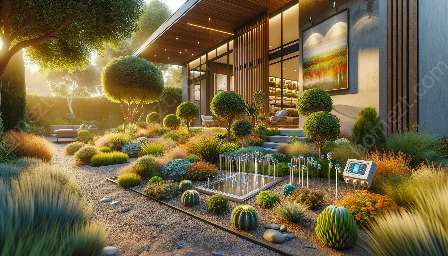An essential aspect of maintaining a healthy garden and lush landscaping is providing adequate and consistent water to the plants. Watering techniques have evolved, and one of the most efficient and convenient solutions is automatic watering systems. In this comprehensive guide, we will explore the various types of automatic watering systems, their advantages, and how they integrate with watering techniques and gardening & landscaping practices.
Understanding Automatic Watering Systems
Automatic watering systems, also known as irrigation systems, are designed to deliver water to plants in a controlled and efficient manner. These systems eliminate the need for manual watering, which can be time-consuming and inconsistent.
There are several types of automatic watering systems, including drip irrigation, soaker hoses, sprinkler systems, and smart irrigation controllers. Each type has its unique features and benefits, catering to different gardening and landscaping needs.
Drip Irrigation
Drip irrigation is a method that delivers water directly to the base of plants, minimizing water loss due to evaporation and runoff. It consists of a network of tubing and emitters that precisely dispense water to the root zone, promoting healthy growth and reducing weed growth.
Soaker Hoses
Soaker hoses are porous hoses that release water along their length, providing slow and thorough watering to the surrounding soil. They are ideal for flower beds, vegetable gardens, and other densely planted areas, ensuring deep root penetration and conserving water.
Sprinkler Systems
Sprinkler systems are versatile and suitable for covering larger areas. They disperse water in a pattern, effectively hydrating lawns, shrubs, and trees. Modern sprinkler systems can be programmed to deliver water at specific times and rates, adapting to the unique requirements of different plantings.
Smart Irrigation Controllers
Smart irrigation controllers utilize advanced technology to optimize water usage based on environmental conditions, plant types, and soil moisture levels. These systems can be remotely controlled and programmed, offering precise and efficient watering, ultimately saving water and promoting healthier plants.
Integration with Watering Techniques
Automatic watering systems integrate seamlessly with various watering techniques, enhancing their effectiveness and reliability. By utilizing the right watering technique in combination with an automatic system, gardeners and landscapers can achieve optimal water distribution while minimizing waste and labor.
Adapting to Plant Needs
Understanding the watering needs of different plant species is essential for successful gardening and landscaping. Automatic watering systems can be tailored to deliver precise amounts of water at appropriate intervals, accommodating the specific requirements of diverse plants. Whether it's adjusting the flow rate for delicate flowers or ensuring deep watering for established trees, these systems can be customized to support healthy plant growth.
Conserving Water
Effective watering techniques, such as drip irrigation and soaker hoses, contribute to water conservation by delivering water directly to the root zone, minimizing evaporation and runoff. By incorporating these techniques into the design and operation of automatic watering systems, gardeners and landscapers can promote sustainable water usage and environmental stewardship.
Ensuring Even Coverage
One common challenge in traditional watering methods is achieving uniform water distribution across the entire planting area. Automatic watering systems, particularly sprinkler systems and smart controllers, address this issue by providing consistent coverage, effectively eliminating dry spots and overwatered areas. This level of precision enhances plant health and aesthetics, leading to vibrant and well-maintained landscapes.
Enhancing Gardening & Landscaping
The utilization of automatic watering systems is transformative for gardening and landscaping endeavors, offering numerous benefits that positively impact plant health, resource efficiency, and overall aesthetics.
Time Savings
One of the most significant advantages of automatic watering systems is the time saved on manual watering tasks. With automated scheduling and precise delivery, gardeners and landscapers can focus on other essential maintenance activities while ensuring that their plants receive consistent and adequate moisture. This time efficiency allows for the expansion of planting areas and the realization of more ambitious landscape designs.
Improved Plant Health
Consistent and appropriate moisture levels are fundamental to sustaining healthy plants. Automatic watering systems contribute to plant health by preventing under- or overwatering, reducing stress on plants, and promoting robust root development. As a result, plants exhibit improved resilience to environmental stresses, pests, and diseases, enhancing the longevity and vigor of garden and landscape plantings.
Customized Irrigation
With the flexibility and programmability of modern automatic watering systems, gardeners and landscapers can create tailored irrigation schedules and zones to address the specific needs of different plantings. Whether it's adjusting the watering frequency for newly planted seedlings or optimizing the hydration levels for mature trees and shrubs, the adaptability of these systems empowers users to optimize plant performance and conserve resources.
Landscape Integration
Automatic watering systems seamlessly blend with the overall landscape, enhancing its visual appeal and functionality. Concealed drip lines, strategically positioned soaker hoses, and discreet sprinkler heads ensure that the irrigation infrastructure does not detract from the aesthetic aspect of the garden or landscape. This integration enables the sustainable maintenance of lush and vibrant outdoor spaces without compromising their visual charm.
Conclusion
Automatic watering systems represent a significant advancement in gardening and landscaping practices, offering efficiency, precision, and sustainability in water management. By understanding the various types of automatic watering systems, their compatibility with watering techniques, and their role in enhancing gardening and landscaping, individuals can leverage these technologies to create thriving and visually captivating outdoor environments while conserving water resources.

